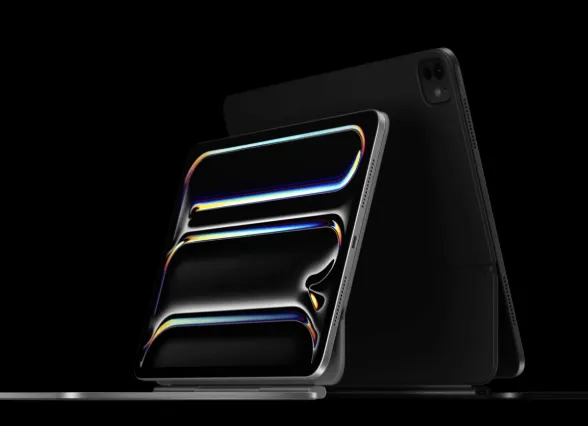Apple may be preparing to take the sleek design of its iPad Pro lineup even further. According to recent reports, the company is considering a hardware update that could result in thinner bezels, thanks to advancements in OLED panel technology. The move would involve adopting a new display driver chip developed by LX Semicon, potentially giving Apple’s suppliers greater flexibility in how future screens are manufactured.
A Step Toward a More Refined Display Design
Currently, Apple relies solely on Samsung for its display driver ICs, which are responsible for transmitting signals that power the OLED screen. These chips are built using a chip-on-film (CoF) process, incorporating thin film transistors to control each pixel. If Apple decides to approve LX Semicon’s alternative driver chip, LG Display could begin integrating its own CoF materials into future iPad panels.
This shift would allow LG to have greater control over its OLED manufacturing process, particularly along the screen’s edges. By refining how the display connects to its borders, LG could trim down the bezel size even further, paving the way for a more immersive visual experience. Although Apple previously declined LX Semicon’s proposal in 2024, renewed discussions suggest the company is reevaluating its options.
Encouraging Competition Among Suppliers
Introducing a second supplier for display driver chips could create a healthy rivalry between Samsung and LG. That competition may not only lower production costs for Apple but also accelerate innovation in display technology. LG’s increased autonomy could also inspire creative engineering solutions—especially around bezel reduction and panel integration.
Still, industry insiders believe these changes won’t appear in the upcoming iPad models slated for release in 2025 or early 2026. Instead, users may see the benefits of this new approach in later generations.
Balancing Aesthetics and Usability
While ultra-thin bezels have become a major design trend, there’s a practical limit to how far they can shrink—especially on larger devices like the iPad. Tablets need a minimal border to allow users to hold them comfortably without accidentally touching the screen. Removing too much of the bezel could make handling less ergonomic.
Apple’s engineers will likely continue working to refine the iPad’s balance between form and function—offering a modern, minimalist design without compromising everyday usability. If the company moves forward with LX Semicon’s chip, it could mark another subtle yet significant evolution in Apple’s ongoing pursuit of premium craftsmanship and visual excellence.
